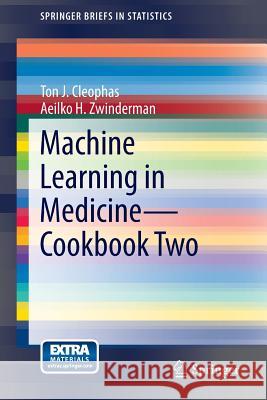Machine Learning in Medicine - Cookbook Two » książka
Machine Learning in Medicine - Cookbook Two
ISBN-13: 9783319074122 / Angielski / Miękka / 2014 / 140 str.
The amount of data medical databases doubles every 20 months, and physicians are at a loss to analyze them. Also, traditional data analysis has difficulty to identify outliers and patterns in big data and data with multiple exposure / outcome variables and analysis-rules for surveys and questionnaires, currently common methods of data collection, are, essentially, missing. Consequently, proper data-based health decisions will soon be impossible.Obviously, it is time that medical and health professionals mastered their reluctance to use machine learning methods and this was the main incentive for the authors to complete a series of three textbooks entitled "Machine Learning in Medicine Part One, Two and Three, Springer Heidelberg Germany, 2012-2013," describing in a nonmathematical way over sixty machine learning methodologies, as available in SPSS statistical software and other major software programs. Although well received, it came to our attention that physicians and students often lacked time to read the entire books, and requested a small book, without background information and theoretical discussions and highlighting technical details.For this reason we produced a 100 page cookbook, entitled "Machine Learning in Medicine - Cookbook One," with data examples available at extras.springer.com for self-assessment and with reference to the above textbooks for background information. Already at the completion of this cookbook we came to realize, that many essential methods were not covered. The current volume, entitled "Machine Learning in Medicine - Cookbook Two" is complementary to the first and also intended for providing a more balanced view of the field and thus, as a must-read not only for physicians and students, but also for any one involved in the process and progress of health and health care.Similarly to Machine Learning in Medicine - Cookbook One, the current work will describe stepwise analyses of over twenty machine learning methods, that are, likewise, based on the three major machine learning methodologies:
- Cluster methodologies (Chaps. 1-3)
- Linear methodologies (Chaps. 4-11)
- Rules methodologies (Chaps. 12-20)











